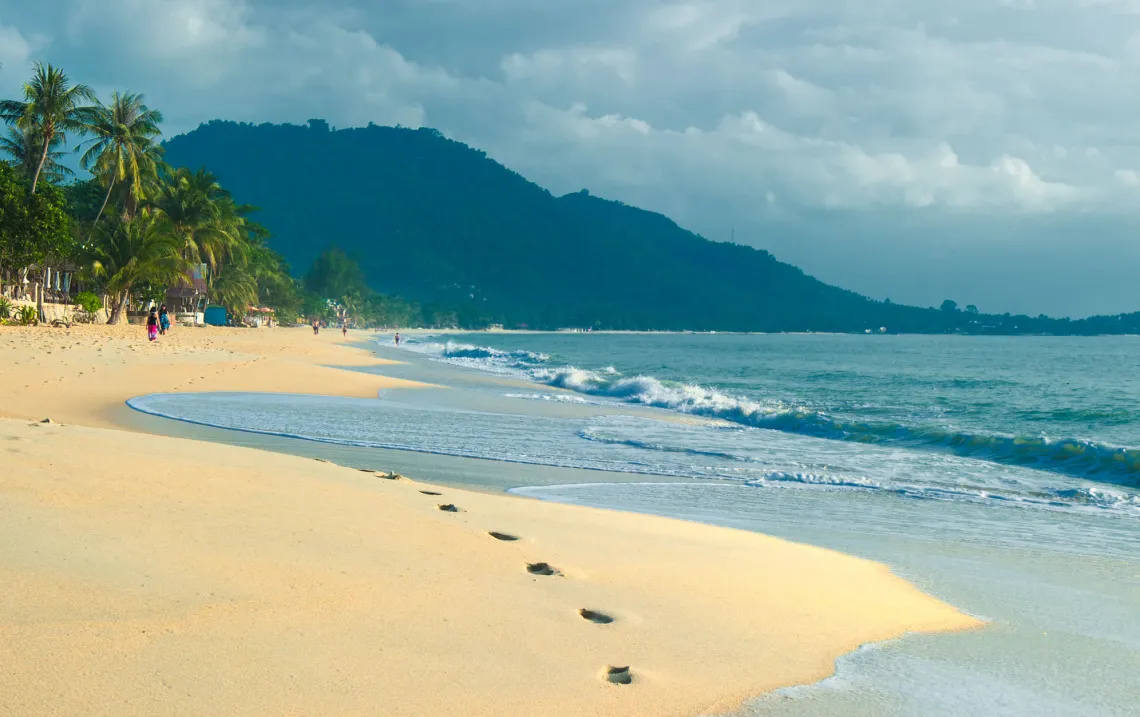Thailand is a great diving destination. It's also a popular one.
It's great not just because of the beautiful underwater world and animals, but also because of the good food, the culture, and its people.
It has two major coastlines - the Andaman Sea on the west coast and the Gulf of Thailand on the east.
Best Time to Visit
The best time to visit Thailand depends on the monsoon season, which you should try to avoid. Monsoon season changes depending on which coast you are. The west coast's best time is from November to April, with calm seas and good visibility. The east coast's best time is from March to September, with calmer seas and less rain. But Koh Tao remains diveable year-round with brief storms.
Now let's look at what are there in the West and East Coast.
The West Coast (Phuket, Koh Phi Phi, Similan, Andaman Sea)

To explore the west coast, we did a liveaboard and we'd recommend you to do the same. Simply because there are lots of sites and a liveaboard allows you to relax and chill.
The Similan & Surin Islands
This is usually dived from a liveaboard. Of course, you can also do day trips, but - to be honest, the best dive site in this area is called Richelieu Rock, discovered by the French explorer Jacques-Yves Cousteau. It's a rock underneath the sea, and it attracts lots of fish, big and small.
A protected marine national park, this archipelago is often considered the crown jewel of Thai diving. The underwater landscape is dramatic, with massive granite boulders, swim-throughs, and crystal-clear waters. This area is typically explored via liveaboard trips, which allow you to access remote sites at the best times, though day trips are also available from Khao Lak.
Richelieu Rock: A world-famous dive site shaped like a horseshoe. It's a magnet for majestic marine life, including Whale Sharks (most common February-April), Manta Rays, and countless schools of tropical fish. The rock itself is covered in colorful sea fans and anemones.
Elephant Head Rock: Known for its exciting swim-throughs and channels, this site is teeming with life. You can expect to see everything from tiny nudibranchs to patrolling Reef Sharks.
Fantasy Ridge: An underwater ridge with a stunning drop-off, home to big pelagics and beautiful soft corals.
Phuket
Phuket is a big island, depending on where you go, you can find quiet beach like Rawai, party town like Patong, or authentic old town. There are some nice freediving places near Phuket and amazing freediving schools like Nama Freediving. We think that Phuket didn't have much good food compared with the mainland though. Based from Phuket, you can dive in Koh Phi Phi as well.
Koh Phi Phi
Famous for its stunning limestone cliffs above water, Phi Phi offers great diving below. Key sites include Hin Bida and the King Cruiser Wreck. It doesn't always have great visibility, but the scenery above water is amazing. And you can see some weird creatures.
The East Coast (Gulf of Thailand, Koh Tao, Koh Samui)
The east coast has calmer and warmer water, making it very beginner friendly. Koh Tao is the most famous place there for diving. They say that Koh Tao has certified more divers than anywhere else in the world. Also, it's a backpacker's paradise in Koh Tao because of the party scene there.
Koh Tao
Affectionately known as "Turtle Island," Koh Tao is one of the most popular places in the world to get your scuba certification, thanks to its calm bays and affordable prices. But it's much more than a beginner's destination.
Chumphon Pinnacle: A collection of large granite pinnacles rising from the depths, this is Koh Tao's premier dive site. It attracts schools of giant trevally, barracuda, and often hosts Bull Sharks and Whale Sharks.
Southwest Pinnacle: A submerged pinnacle covered in vibrant anemones and home to a wide variety of marine life, from harlequin shrimp to massive groupers.
Sail Rock: Located between Koh Tao and Koh Phangan, this is a classic dive site known for its impressive chimney—a vertical swim-through that you can enter at 18 meters and exit at 5 meters.
Koh Samui

If you like luxury resorts and fancy restaurants, Koh Samui is your choice. It's famous as the honeymoon island with lots of five-star hotels, stunning infinity pools, and world-class spas. But don't think it's all just about relaxing. The island also has a vibrant side, with buzzing nightlife in Chaweng and plenty of activities like visiting the majestic Big Buddha temple or exploring the quirky Grandfather and Grandmother Rocks.
For divers, Koh Samui is the most comfortable and luxurious base in the Gulf. While the best dive sites like Sail Rock are a bit of a boat ride away, you get to experience the same incredible underwater world as Koh Tao and Koh Phangan, but you return to the comfort of a high-end resort and a fancy cocktail by the beach in the evening. It’s the perfect spot for those who want to mix epic diving with a touch of luxury.
Koh Phangan
Koh Phangan is famous for two seemingly opposite attractions: the electrifying, monthly Full Moon Party that draws thousands to Haad Rin Beach, and a deep-rooted spiritual wellness scene, visible in its numerous yoga retreats and Hare Krishna community.
Beyond this "party or pray" reputation, the island offers a rich, balanced experience. Its prime location means it shares access to world-class dive sites like Sail Rock with its neighbors, Koh Tao and Koh Samui, making it a fantastic base for underwater exploration.
Crucially, the island's different vibes are geographically separate, allowing visitors to craft their perfect holiday—whether it's focused on dance and celebration, zen and relaxation, or a seamless blend of both, all set against a backdrop of beautiful beaches and lush jungle.

